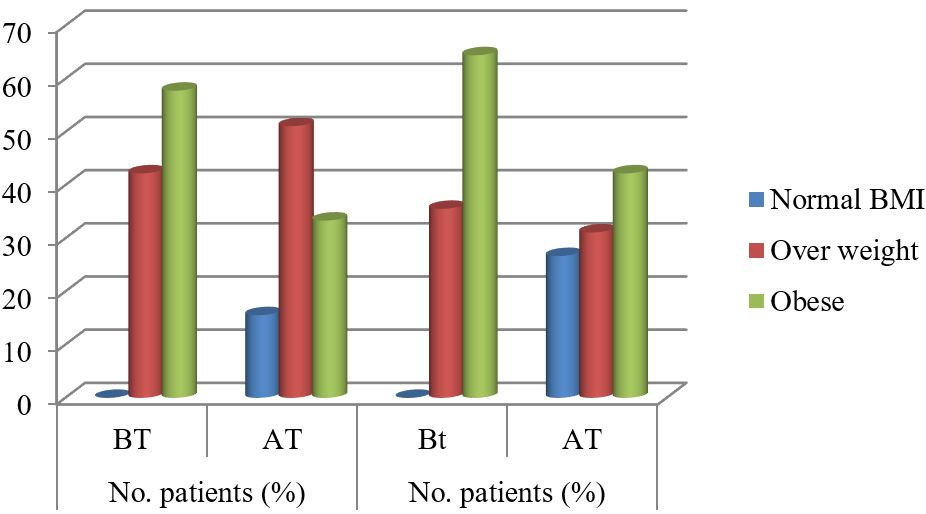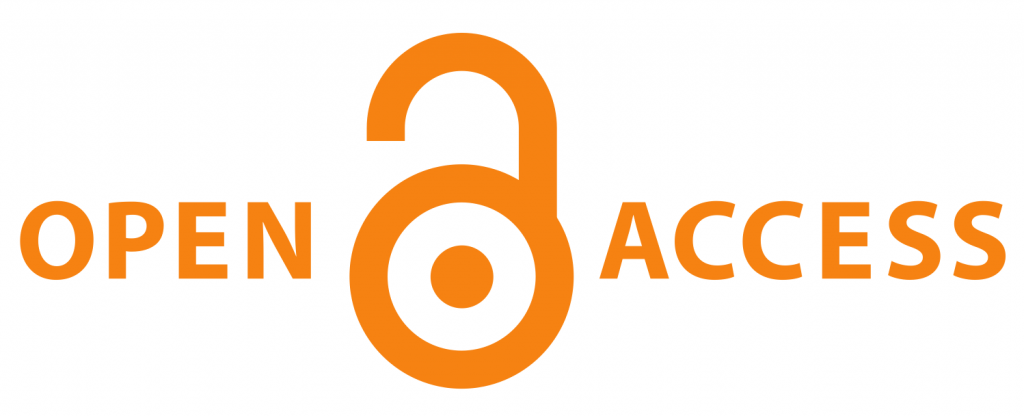Effects of Bilwadi Panchamula and Suryanamaskara Asana in the secondary prevention of Obesity (Athisthaulya)
DOI:
https://doi.org/10.21760/jaims.10.7.3Keywords:
Athisthaulya, Bilwadhi Panchamula, SuryanamasakarayaAbstract
The prevalence of obesity is increasing at an alarming rate worldwide. World Health Organization has revealed that in 2022, 1 in 8 people in the world were living with obesity. In Sri Lanka, the prevalence of overweight and obesity is high among adults. This study aimed to assess the obesity prevalence among the patients who seeks Ayureveda treatments and the efficacy of Bilawadhi Panchamula and Suryanamaskara asana in the secondary prevention of Obesity (Athisthaulya). The clinical study was based on prospective randomized comparative study carried out among the 90 patients in two groups with duration of one year. Group A was given only the Bilwadhi Panchamula decoction with bee honey for twice a day. Group B was given Bilwadhi Panchamula decoction along with Suryanamasakara practicing. In clinical study administration of Bilwadhi Panchamula decoction, the mean Weight, Body mass index, Waist circumference, and Total cholesterol were reduced by statistically highly significant (p<0.001) mid upper arm circumference was statistically insignificant. But administration of Bilwadhi Panchamula along with Suryanamaskara was statistically highly significant in the reduction of weight, Body mass index, and waist circumference in mid-upper arm circumference, and Total cholesterol. The overall effects of therapy indicate that markedly improved 26.67% of Group B while 15.55% of Group A from the BMI in the normal range. Also indicates that moderately improved in 42.22% of Group B while 33.34% of Group A was giving the improvement of BMI in reducing the percentage of Obesity patients.
Downloads
References
Agnivesha, Charaka, Dridhabala. Charaka Samhita Sutrasthana 21/3. Translated by Sharma RK, Dash VB. Varanasi: Chaukhambha Publication; 2014.
World Health Assembly. WHO global strategy on diet, physical activity and health. Geneva: World Health Organization; 2004.
World Health Organization. Obesity and overweight [Internet]. 2012 [cited 2015 Apr 26]. Available from: http://www.who.int/mediacentre/factsheets/fs311/en/index.html
Katulanda P, Jayawardena MA, Sheriff MH, Constantine GR, Matthews DR. Prevalence of overweight and obesity in Sri Lankan adults. Obes Rev. 2010;11(11):751–6. doi:10.1111/j.1467-789X.2010.00746.x
Pilli S, Gebremariam A, Keirns CC, Davis MM, Vijan S, et al. Getting heavier, younger: trajectories of obesity over the life course. Int J Obes (Lond). 2010;34(10):614–23.
Jayawardena R, Byrne NM, Soares MJ, Katulanda P, Yadav B, Hills AP. High dietary diversity is associated with obesity in Sri Lankan adults: an evaluation of three dietary scores. BMC Public Health. 2013;13:314. doi:10.1186/1471-2458-13-314
Latha BP, Reddy RM, Ismail SM, Vijaya T. Medicinal plants and their derivatives as potential source in treatment of obesity. Asian J Exp Biol Sci. 2010;1(4):719–27.
Park K. Preventive and Social Medicine. 23rd ed. Jabalpur: Banarsidas Bhanot; 2015.
Kang JG, Park CY. Anti-obesity drugs: A review about their effects and safety. Diabetes Metab J. 2012;36(1):13–25.
Agnivesha, Charaka, Dridhabala. Charaka Samhita Sutrasthana 21/24. Translated by Sharma RK, Dash VB. Varanasi: Chaukhambha Publication; 2014.
Jindal R. Arogya Sewa Prakashan. Modinagar: Panchwati, Umesh Park; 2007. p.128–30.
Nautiyal R. Effect of Surya Namaskar on weight loss in obese persons. Int J Sci Consciousness. 2016;2(1):1–5.
James PT, Leach R, Kalamara E, Shayeghi M. The worldwide obesity epidemic. Obes Rev. 2001;9(Suppl 1):228S–33S. Hossain P, Kawar B, Nahas EM. Obesity and diabetes in the developing world—a growing challenge. N Engl J Med. 2007;356:213–5.
Jones-Smith JC, Gordon-Larsen P, Siddiqi A, Popkin BM. Is the burden of overweight shifting to the poor across the globe? Time trends among women in 39 low- and middle-income countries (1991–2008). Int J Obes. 2012;36:1114–20.
Agnivesha, Charaka, Dridhabala. Charaka Samhita Sutrasthana 21/20, 21/24. Translated by Sharma RK, Dash VB. Varanasi: Chaukhambha Publication; 2014.
Samarakoon SMS, Hapapathdeniya SKMK. A clinical study on the effect of Mahapasmul decoction on Sthaulya (overweight and obesity). Indian J Anc Med Yoga. 2019;12(3).
McComb JJ. Sound traditional and prepartum exercises for good health. Yoga Phys Ther. 2015;6:220.
Pal R, Rao S, Deo G, Basavaraddi IV. Impacts of the Surya Namaskar on body composition and physiological parameters among yoga and non-yoga professionals: a quasi-experimental study. J Diagn Clin Res. 2024 Feb 1. Available from: https://www.jcdr.net
Yadav SK, Bhati KR, Bhati LS. Assessment of the efficacy of Surya Namaskar in management of Sthaulya. World J Pharm Pharm Sci. 2024 Nov 20. ISSN: 2278-4357.















